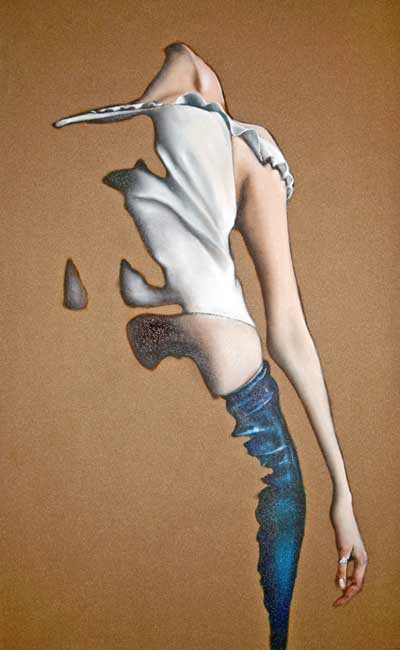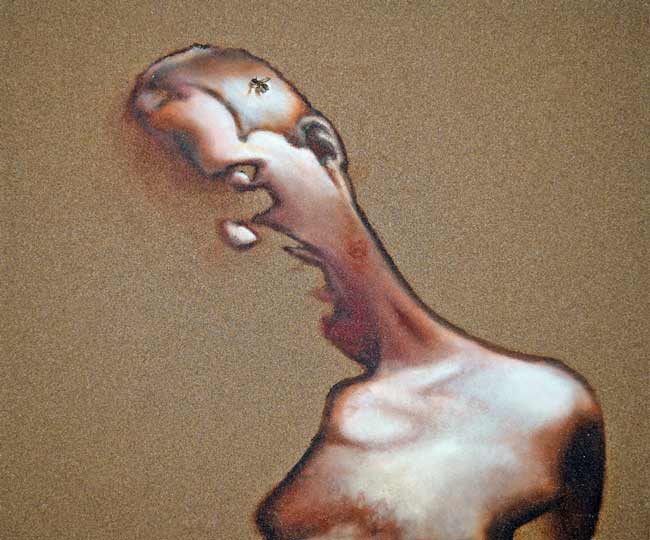Greg Kuppinger, figurative paintings on sandpaper

Growing up I remember sitting at the table with my father. When the sun would shine in through the trees outside, he would always ask, "How would you paint that?". That has always stuck with me and I have been fascinated with the effects of light on objects and what can't be seen in the absence of light.
I have worked for over fifteen years as a professional artist and oil painter. As a painter I have worked in the studios of Mark Kostabi, a leading figure in the East Village art movement of the 80's, as well as Douglas Davis, an innovative and controversial multimedia artist.
In 2001 I decided to leave NY and move to Buffalo in order to concentrate on the development of my own body of work.

Sandpaper Paintings
One of the first artists I was influenced by was Caravaggio. I saw a poor reproduction of one of his works when I was younger and there was something about the dramatic lighting and figures fading into the background that struck me. I also looked at a lot of art books, especially a book on Leonardo da Vinci that had a large image of The Last Super. I was fascinated by the parts of the painting where the wall had crumbled or worn away but you could still imagine the rest of the figures.

I remember as a child, lying in my bed at night and looking around the room in the dark. Everything looked pixelated. Staring at these tiny spots vibrating and moving I used to wonder if I was seeing the atoms that made up everything.
I think all of these had some influence on me when I began working on the sandpaper series of paintings. I focus mainly on the effects of light on figures and objects. Working on these pieces I began to realize that they were taking on a deeper meaning to me and became more introspective. Painting over the grains of sand got me thinking more and more about how nothing in the physical world is solid matter. When you get down to the atomic and subatomic levels you realize everything is just made up of vibrations of energy.
Greg Kuppinger
Jun 3, 2017
